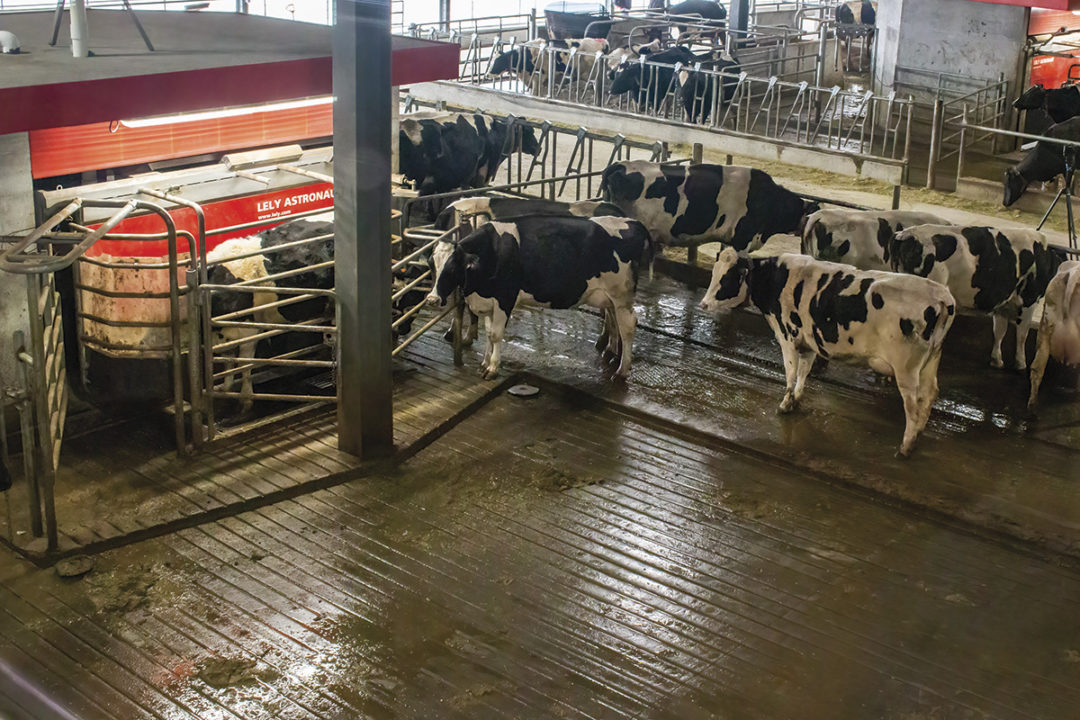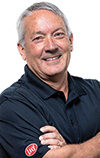Routine sanitization of milking equipment is a critical component of operating a dairy that promotes positive animal health, milk quality and working conditions. Robotic milking facilities come with unique sanitization routines that can be fine-tuned to improve these conditions. An effective, customized hygiene regimen both inside and outside of milking robots ensures reliable operation, reduced downtime, increased yields and delivery of high-quality milk.
Initial approaches
One of the fundamental ways to approach sanitization processes is to test the water at your facility. Hard water or untreated well water, as opposed to softened water, can potentially lead to residue buildup in and on equipment, often requiring both foaming cleansers and downtime to perform the cleaning procedures manually. Additionally, a sanitary environment where the milking robots are housed supports function and reliability. The exterior of the milking robot should be cared for with attention equal to the interior. Implementing routine cleaning standard operating procedures (SOPs) makes cleaning a practice, not a project. Proper personal protective equipment (PPE) should always be included to ensure workplace safety, especially when working with chemicals.
Cleaning robots with TACT
Most robotic milking systems feature built-in cleaning programs that run automatically on a predetermined schedule to achieve multiple cleanings per day. They include pre- and post-rinses as part of the process, each requiring various chemicals and temperatures. While these programs can be customized to the specific needs of a dairy or herd, they can generally be understood in the context of time, action, chemicals and temperature (TACT). This acronym breaks down the steps of a cleaning routine into four categories:
-
Time – This is the amount of time the robot is set for cleaning and sanitizing. Somewhat counterintuitively, shorter cleaning times are better. Ideally, times are kept as short as possible to optimize the number of milkings that can be completed each day. The other three pillars of TACT each play a unique role in determining the time required. For example, higher temperatures may reduce necessary cleaning time and improve disinfection but limit the types of chemicals that can be used. Time can be customized to meet the needs of a herd. For example, dairy producers raising Jerseys, a breed known for producing a higher quantity of solids, may want to increase their pre-rinse time to fully flush the solids out of a milking system.
-
Action – This is the force of air and water moving through the system. The force of the action works in tandem with chemicals and temperature to perform the cleaning. Higher action more readily strips solids out of a system, but setting it too high may cause early wear on consumable parts. Ideally, water moving through the system is not circulated during cleaning, ensuring dirty water is not used at any point in the sanitization process.
-
Chemicals – These are the chemical cleaners deemed appropriate for the system and herd. In addition to water, most robotic systems use a combination of chemicals to achieve complete cleaning and sanitization. In the pre-rinse phase of a cleaning routine, water is heated upward of 110ºF and is used to flush out milkfats. Next, alkalines are cycled through the system to break down sugars, carbohydrates and starches. After this step, some systems may also introduce an acid cleaner to eliminate milk stone deposits, such as calcium and magnesium. The final step, applying an EPA-approved sanitization chemical, is highly dependent on the temperatures being used during cleaning. Lower temperatures allow for the use of chlorine sanitizers, which are proven to be extremely effective. Robotic systems using higher heat in the sanitization process typically avoid the use of chlorine due to its property of oxidation at high temperatures and its potential to pit stainless steel surfaces. In this case, a mix of hydrogen peroxide and peracetic acid would be used as the sanitizing agent.
- Temperature – This is the heat of the cleaning agents or water being cycled through the system. As described above, temperature influences every step of the sanitization process. As a general rule, higher heat means additional disinfection. Whether the temperature is being increased to minimize the time needed to dissolve solids or decreased to allow for the use of preferred chemical agents, temperatures should ideally be kept as high as the producer’s preferred method allows.
The proof is in the final product
Robotic milking systems that are optimally maintained with customized cleaning regimens have longer usage lives, experience less downtime and help to ensure the milk going into the tank is as clean as possible. While it is a process of trial and error to determine the exact set of TACT variables needed to optimize a robotic milking system, the potential increase in yields makes the time spent well worth it and allows the dairy producer to maximize their investment in robotics.







